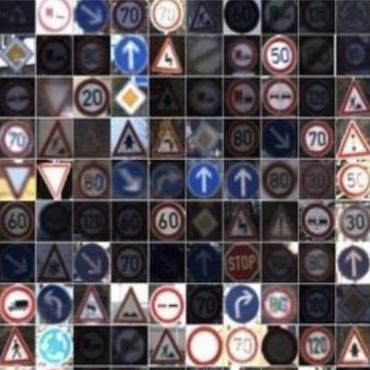Autonomous Vehicles
534 papers with code • 1 benchmarks • 27 datasets
Autonomous vehicles is the task of making a vehicle that can guide itself without human conduction.
Many of the state-of-the-art results can be found at more general task pages such as 3D Object Detection and Semantic Segmentation.
( Image credit: GSNet: Joint Vehicle Pose and Shape Reconstruction with Geometrical and Scene-aware Supervision )
Libraries
Use these libraries to find Autonomous Vehicles models and implementationsDatasets
Subtasks
Latest papers with no code
An Online Spatial-Temporal Graph Trajectory Planner for Autonomous Vehicles
Among these modules, the trajectory planner plays a pivotal role in the safety of the vehicle and the comfort of its passengers.
S4TP: Social-Suitable and Safety-Sensitive Trajectory Planning for Autonomous Vehicles
To effectively assess the risks prevailing in the vicinity of AVs in social interactive traffic scenarios and achieve safe autonomous driving, this article proposes a social-suitable and safety-sensitive trajectory planning (S4TP) framework.
How to deal with glare for improved perception of Autonomous Vehicles
In this paper, we investigate various glare reduction techniques, including the proposed saturated pixel-aware glare reduction technique for improved performance of the computer vision (CV) tasks employed by the perception layer of AVs.
Developing Situational Awareness for Joint Action with Autonomous Vehicles
Unanswered questions about how human-AV interaction designers can support rider's informational needs hinders Autonomous Vehicles (AV) adoption.
Characterization and Mitigation of Insufficiencies in Automated Driving Systems
Automated Driving (AD) systems have the potential to increase safety, comfort and energy efficiency.
Characterizing Soft-Error Resiliency in Arm's Ethos-U55 Embedded Machine Learning Accelerator
As Neural Processing Units (NPU) or accelerators are increasingly deployed in a variety of applications including safety critical applications such as autonomous vehicle, and medical imaging, it is critical to understand the fault-tolerance nature of the NPUs.
Benefits of V2V communication in connected and autonomous vehicles in the presence of delays in communicated signals
In particular, we relate this delay's effect on the selection of the time headway in predecessor-follower type vehicle platooning with a constant time headway policy (CTHP).
Depth Estimation using Weighted-loss and Transfer Learning
The optimized loss function is a combination of weighted losses to which enhance robustness and generalization: Mean Absolute Error (MAE), Edge Loss and Structural Similarity Index (SSIM).
Voice-Assisted Real-Time Traffic Sign Recognition System Using Convolutional Neural Network
Traffic signs are important in communicating information to drivers.
Incorporating Explanations into Human-Machine Interfaces for Trust and Situation Awareness in Autonomous Vehicles
In this sense, explainability of real-time decisions is a crucial and natural requirement for building trust in autonomous vehicles.


 CARLA
CARLA
 AirSim
AirSim
 INTERACTION Dataset
INTERACTION Dataset
 Talk2Car
Talk2Car
 RadarScenes
RadarScenes
 ROAD
ROAD
 Drive&Act
Drive&Act
 ApolloCar3D
ApolloCar3D
 Argoverse 2 Motion Forecasting
Argoverse 2 Motion Forecasting
 DADA-2000
DADA-2000












